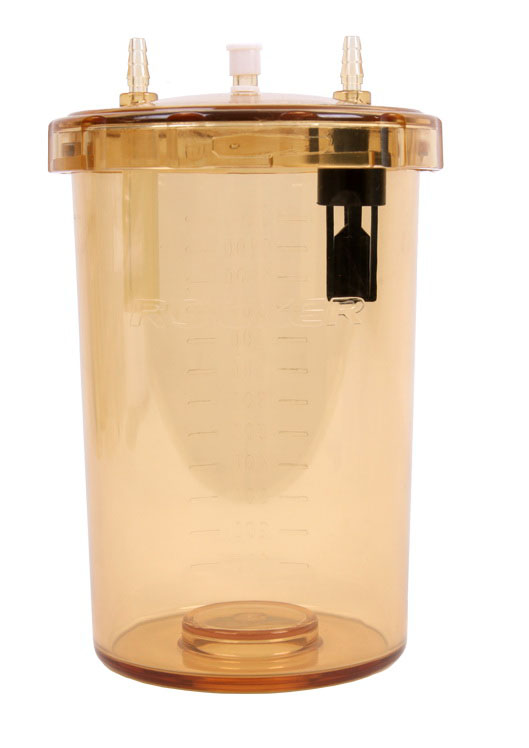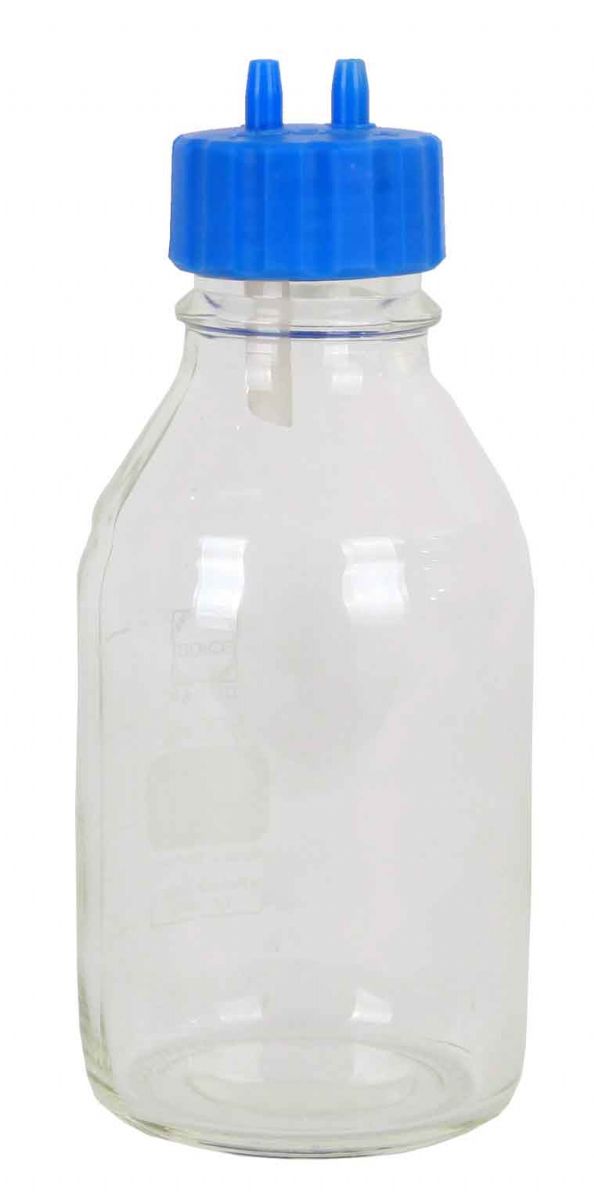Use and classification of buffer bottles in vacuum filtration and aspiration
Buffer bottles are a very useful tool in the laboratory, also known as safety bottles or vacuum pump protection bottles.

BV235 cell culture waste liquid suction device : standard product with 1 buffer bottle and 1 waste bottle
The buffer bottle is generally used in a vacuum filter device, a vacuum pipette, and is placed between the vacuum pump and the bottle set containing the filtrate and waste liquid through a connecting hose. The main purpose is to prevent the liquid from sucking back and protect the liquid from damage caused by the vacuum pump. After the buffer bottle is used, the vacuum pump damage caused by the reverse suction can be greatly reduced, unnecessary troubles are reduced, and the test is guaranteed to proceed normally.
Traditionally, the buffer bottles used by customers are usually modified from laboratory flasks. Generally, a rubber stopper is inserted into the triangular flask. The rubber stopper is perforated, inserted into the pump tube, and then connected to the suction pump at one end and suction filtration at the other end. Bottle or aspiration bottle. This practice is usually seen in the early days when there is no professional buffer bottle, which is time-consuming and labor-intensive, and the sealing is also poor. The triangular bottle is generally more fragile for the glass material. Once the liquid-filled bottle is broken, it also takes up the normal experiment. Time, in addition, the main problem is that the internal two pipes are not specially designed, and the distance is too close or easy to suck back, and the protection effect is poor.
Nowadays, with the development of membrane filtration and waste liquid suction devices, applications are becoming more and more common, and professional buffer bottle products are also born, which is more convenient to use and has better protection effect. At the same time, the user does not need to modify it himself. The required hoses and adapters are also very complete. After purchase, they can be directly connected and used, which saves the experimenter's time and allows them to put more energy into the test. At the same time, the types of products are more diverse, and users can choose according to their personal preferences:

Plastic material buffer bottle: The biggest advantage is that it is light, resistant to falling and not easy to break. Because the plastic itself is light in weight, the weight of the liquid is significantly lighter than that of the glass material, which facilitates the dumping of the waste liquid. At the same time, the glass is resistant to falling and not easily broken. In addition, since plastic products are cast using molds, they can have more complicated structures than glass products, such as SB-P12E plastic buffer bottles, with water-blocking float valves inside, which will close when the liquid level rises to a certain height. The suction port prevents a large amount of liquid from flowing into the pump.

The blue cap reagent bottle is used as the buffer bottle for the collection bottle: the blue cap reagent bottle is the most widely used glass bottle in the laboratory. The reagent bottle starts from the 250ml capacity specification, and there are 500ml, 1000ml, 2000ml, 5000ml, 10L, 20L of these specifications, the bottle mouth is the international standard GL45 specification, the newly designed SC-45 two-hole suction cap can be connected with any bottle of the above specifications, with 2 nozzles, can be connected to the vacuum pump and the filter bottle or Vacuum the bottle and use the reagent bottle as a buffer bottle. The advantage of this method is that the customer only needs to buy one liquid suction cap or one type of buffer bottle. In the future, whether you want to replace the bottle of other capacity or the bottle is damaged, you can immediately take a blue cover of the laboratory. Replacing the reagent bottle is very versatile and will not delay the experiment time because the buffer bottle is broken and needs to be purchased again. For example, SB-4510 buffer bottle, with 2 air suction cap and 1000ml blue cap reagent bottle.
More laboratory vacuum filtration and biological waste extraction products and accessories can be found on our website.
Basic organic raw material
Shandong YingLang Chemical Co.,Ltd , https://www.sdylhgtrade.com